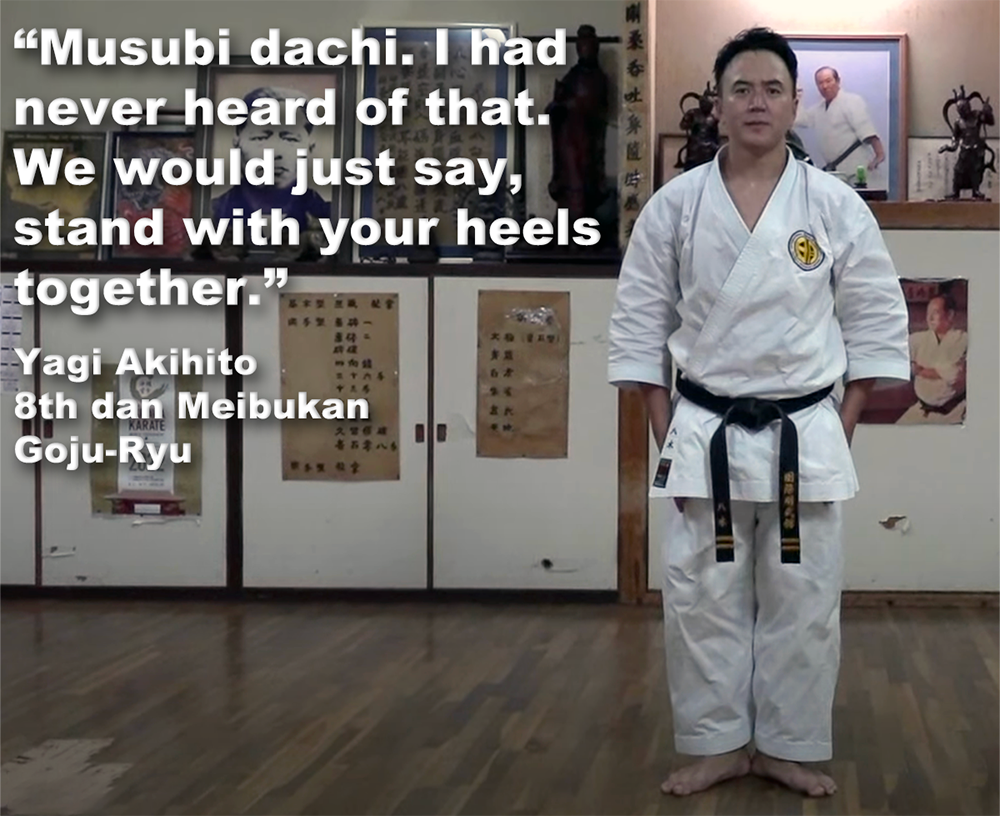
When and why did people start using these Japanese phrases for techniques?
Posted by ADAM CARTER on AUG 8, 2022

When and why did people start using these Japanese phrases for techniques?
The Japanese technical terms that we use for our techniques came about a long time after the actual creation of the techniques themselves.
Karate, as we know (or should do), originally came from Okinawa, but in the early days the karate environment was very different compared to the modern day karate environment. The Dojo, as we know it, didn’t exist as it does now. Nothing was structured for large groups, most teachers taught just a small handful of students. Each teacher had their own approach, the forerunner of a style, to protect themselves from civilian attacks.
One example of the terms we use today is “Tachi / Dachi” (立ち) in Japanese, commonly translated as “Stance[s]”. But confusion, can in application, come from a simple misunderstanding of a common word. In everyday English we use the word ‘stance’ to infer a fixed, unchanging position or viewpoint. This common use of the word ‘stance’ can confuse people into thinking that we make use of the ‘stance’ in karate in the same way, that it represents fixed positions. When in fact they do not. Stances are a snapshot, a moment in time, and not frozen in a given position.
Yagi Akihito sensei of Meibukan Goju-Ryu stated that; “Musubi dachi. I had never heard of that. We would just say, stand with your heels together. [snip] But when I teach people abroad, people understand me better if I say ‘Musubi dachi’. It’s useful when practicing the same thing together.”
Uema Takeshi sensei of Shubukan Shorin-Ryu stated; “We would just say, do this or do that, lower your hips, spread out your legs. In fact there weren’t any names.”
And this is the crux of the matter. All karate techniques didn’t have a specific name dedicated to them. People just referred to the movements verbally.
As you can see from the above example, it is very easy to create confusion with what a technique was actually created for, when compiling a lexicon to enable common terminology for the teaching of larger groups.
So the next question is, when and why did people start using these Japanese phrases for techniques?
The spread of karate to mainland Japan in the early part of the 20th century, played a huge part in this. Karate was introduced to the schools and universities where a structure was needed to teach to a larger group of students. Other martial arts from Japan, such as Judo, Kendo, Kyudo etc, already had terminology for their techniques, and to bring the new karate into line with other Japanese arts it was deemed a necessary inclusion.
The technique terms were needed as a more precise, simpler way to make sure a student understood what was required of them, rather than having a different explanation from each teacher.
However, the interesting thing about technical terms in any field, is that they can be interpreted differently. And when people start to use them in conversations, across languages, people can become misled into thinking that they are talking about the same things, when in fact they are sometimes at cross purposes.
All of these terms can be confusing, especially for those who do not speak or read Japanese. Since Japanese words are written with combinations of symbols that represent entire words by themselves, there can be a lot of depth to them and can easily be misinterpreted.
This also extends to Uchinaguchi (Okinawan language), as there are many concepts in karate that have Uchinaguchi words that do not quite translate into Japanese very well. Perhaps this has contributed to the misunderstanding of techniques and principles that have plagued modern day karate and its applications.y from a fight, and be happy to do so. Know yourself well enough that you can recognize that it’s okay, to win by losing. Stay cool and humble, you don’t have to prove yourself to anyone. Survive.
